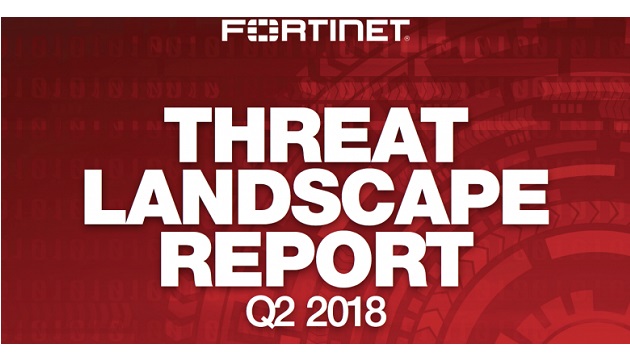Fortinet, a global leader in broad, integrated, and automated cybersecurity solutions, announced the findings of its latest Global Threat Landscape Report. The research reveals cyber criminals are becoming smarter and faster in how they leverage exploits to their advantage. They are also maximizing their efforts by targeting an expanding attack surface and by using iterative approaches to software development facilitating the evolution of their attack methodologies. For a detailed view of the findings and some important takeaways for CISOs read the blog. Highlights of the report follow:
- Virtually No Firm is Immune from Severe Exploits: Analysis focused on critical and high-severity detections demonstrates an alarming trend with 96% of firms experiencing at least one severe exploit. Almost no firm is immune to the evolving attack trends of cyber criminals.
- Cryptojacking Moves to IoT Devices in the Home: Mining for cryptocurrency continues, cyber criminals added IoT devices, including media devices in the home to their arsenals. They are an especially attractive target because of their rich source of computational horsepower, which can be used for malicious purposes.
- Botnet Trends Demonstrate the Creativity of Cyber Criminals: Data on botnet trends gives a valuable post-compromise viewpoint of how cybercriminals are maximizing impact with multiple malicious actions. WICKED, a new Mirai botnet variant, added at least three exploits to its arsenal to target unpatched IoT devices.
- Malware Developers Leverage Agile Development: Malware authors have long relied on polymorphism to evade detection. Recent attack trends show they are turning to agile development practices to make their malware even more difficult to detect and to counter the latest tactics of anti-malware products.
- Effective Targeting of Vulnerabilities: Adversaries are selective in determining what vulnerabilities they target. With exploits examined from the lens of prevalence and volume of related exploit detections, only 5.7% of known vulnerabilities were exploited in the wild.
- Education and Government Application Usage: When comparing application count usage across industries, government use of SaaS applications is 108% higher than the mean and is second to education in the total number of applications used daily, 22.5% and 69% higher than the mean, respectively.
Rajesh Maurya, Regional Vice President, India & SAARC, Fortinet said – “Cyber adversaries are relentless. Increasingly, they are automating their toolsets and creating variations of known exploits. Of late, they are also more precise in their targeting, relying less on blanket attempts to find exploitable victims. Urgently, organizations must pivot their security strategy to address these tactics. Organizations should leverage automated and integrated defenses to address the problems of speed and scale, utilize high-performance behavior-based detection, and rely on AI-informed threat intelligence insights to focus their efforts on patching vulnerabilities that matter.”







